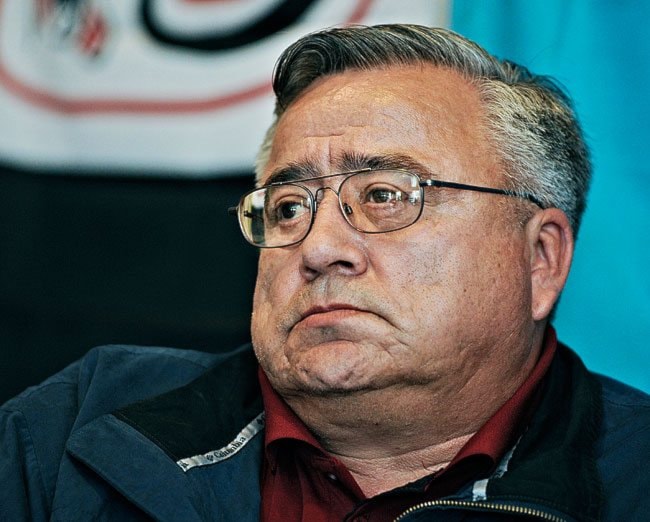The First Nations involved with the Peel planning process are ready for a legal battle if the Yukon government does not live up to its treaty obligations.
“We’ve still got our guns loaded and ready to go,” said Chief Simon Mervyn of the First Nation of Na-cho Nyak Dun and spokesperson for the affected First Nations. “All somebody has to do is pull the trigger.”
The government’s announcement last week of proposed modifications to the recommended Peel plan came as no surprise to Yukon’s northern chiefs, he said.
“Their lackadaisical attitude for the past six, seven years in regards to the commission’s work is quite apparent.”
In July of 2011, the Peel Watershed Planning Commission put forward its final recommended plan, which would see 55 per cent of the watershed permanently protected from road construction, and a further 25 per cent protected in the interim, but subject to review every 10 years.
Existing mineral claims in those areas could be developed by air access only.
Last week the government presented its own ideas about what development could look like for the Peel region. In its plans, the entire watershed would be potentially open to new road construction.
Critics have said that the government had its chance to request specific modifications to the plan throughout the process, and must now go forward with consultation on the recommended plan, not its own vision.
“Yukon’s introduction of sweeping new proposals at this point in the plan approval process is not consistent with the process set out in our final agreements,” states a release by the Tr’ondek Hwech’in, the Vuntut Gwitchin First Nation, the Gwich’in Tribal Council and the First Nation of Na-cho Nyak Dun.
NDP MLA Jim Tredger referenced the First Nations’ position in the legislature Monday, and asked why the government has chosen a “path of division and confrontation” on the Peel.
“This government is attempting to rewrite, not only the plan, but the rules, too,” said Tredger.
“Why is this premier so determined to turn the clock back on First Nation relationships and behave like it is 1898 all over again?”
Resource Minister Brad Cathers called the accusations “grossly inaccurate” and “very offensive,” and reiterated that the government has met all obligations under the Umbrella Final Agreement.
The First Nations disagree. However, they are not ready to start legal action quite yet, said Mervyn.
“We’re a very patient people, and we will wait. You know, the process is still underway.”
He hopes that the government will change its course and respect the terms of the Umbrella Final Agreement, a deal signed between the territory and the Council of Yukon First Nations.
“The nations in general gave 97 per cent of our land mass for what?” asked Mervyn. “We signed an agreement, The spirit and intent of the agreement was to work together for the betterment of Yukoners and Yukon in general.
“They’re clearly not abiding by that.”
Mervyn looks forward to this round of public consultation, and is curious about what Yukoners will have to say.
For now, the First Nations will abide by the process and continue to consult with the government on how they would like to see the Peel region protected, said Mervyn.
“Anything out of the ordinary will trigger litigation.”
As to what, specifically, would result in a legal battle, Mervyn wouldn’t say.
Contact Jacqueline Ronson at
jronson@yukon-news.com
